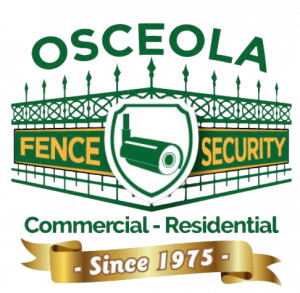Safety Guidelines For Automatic Gates
There’s no question that automatic gates bring a lot of value. They’re designed to secure your property and make life easier. But like any powerful system, they require care and attention to avoid accidents. Following solid Safety Guidelines For Automatic Gates helps keep things running smoothly while protecting the people who use them. Whether the gate is Energized, positioned at your main Entrance, or securing a critical Access point, these systems must be approached with intention. Safety doesn’t happen on its own—it’s built into every choice and action taken around the gate.
common causes of gate-related accidents
It’s easy to think automatic gates are just push-and-go, but that’s rarely the full picture. These are machines with moving parts, weight, and power. If sensors fail or the system malfunctions, serious injuries can happen. Often, accidents come from simple mistakes—someone rushing through, standing too close, or not realizing the gate’s in motion. Children and pets? Even more vulnerable. That’s why Safety Guidelines For Automatic Gates are so important. They help prevent things that most people don’t think about until it’s too late. And once you’ve seen one close call, you understand how crucial prevention really is.
effective ways to guide gate users
When someone new approaches the gate—whether it’s a visitor, a worker, or a delivery driver—they need to know what to do. Clear signage and basic guidance can go a long way here. Don’t assume everyone will figure it out. Simple instructions like where to wait, how long to pause, or what not to touch make a huge difference. These small efforts support the larger picture of gate safety. Without them, even a reliable system can become confusing or dangerous. This is one of the more overlooked Safety Guidelines For Automatic Gates, but it’s often the one that saves the day.
why upkeep plays a critical role
Mechanical systems wear down—it’s just a matter of time. With automatic gates, small issues like rusted hinges or worn-out sensors can lead to much bigger problems if left unchecked. That’s why regular maintenance is a core part of any safety plan. A professional can catch what you might miss. Things like misalignment, slow motor response, or glitches in the controls often start small. But over time, they get worse. By sticking to a maintenance schedule, you’re not just protecting the gate. You’re also protecting everyone who uses it. That’s one more reason why Safety Guidelines For Automatic Gates should always include upkeep.
importance of a clear operating space
It’s surprising how often safety issues start with something as simple as clutter. A trash can, a loose bike, even a forgotten toy can block the gate’s path. These obstacles don’t just inconvenience people—they can trigger mechanical problems or, worse, cause injury. One of the key Safety Guidelines For Automatic Gates is making sure the space around the system stays open and clean. Use signs, barriers, or posts if needed. Just giving the gate enough room to move freely can prevent a long list of problems. It’s not complicated, but it makes a huge difference day to day.
choosing secure and user-friendly access
Not every gate user is the same. Some prefer keypads, others rely on remotes or phone apps. What matters most is that the access control feels easy to use and performs reliably. If a person hesitates or presses the wrong button, they could be putting themselves in harm’s way. And that’s where built-in safety features come into play—auto-reverse, motion detection, and emergency stop functions. These aren’t fancy extras. They’re critical parts of the system. They’re also a big focus in most Safety Guidelines For Automatic Gates because they give users room for human error without serious consequences.
designing for safety across all age groups
Children, older adults, or anyone with mobility challenges may need more time or guidance to safely use an automatic gate. That’s why it’s so important to design the space and controls with all users in mind. Features like longer opening times, extra alarms, or visual signals can make things much safer. You can’t always be there to guide someone, so the system needs to help them along. When thinking about the people who matter most, this step shouldn’t be skipped. These personalized adjustments are part of what makes Safety Guidelines For Automatic Gates feel less like rules—and more like good sense.
signs your system needs a closer look
Sometimes, the gate just doesn’t sound right. Or it moves differently than usual. Those are signs it’s time to stop using it until it’s inspected. Strange noises, hesitation, or jerky movement might not seem like much at first—but they can signal bigger problems. Safety Guidelines For Automatic Gates always include knowing when to pause and ask a professional to take a look. Because using a gate that isn’t working properly is risky. It could damage a vehicle, hurt someone walking by, or even cause a complete system failure. A quick stop now often prevents a long repair later.
relying on expert help for proper setup
Installing a gate is one thing. Keeping it safe and up to date is another. That’s where professionals come in. They don’t just fix things—they know how to set up systems that prevent issues in the first place. A good technician will understand how to test safety mechanisms, adjust sensor angles, and fine-tune settings for your specific needs. Safety Guidelines For Automatic Gates aren’t just about what you do on your own. They’re also about who you trust to help maintain the system. Having that kind of support in place turns a good gate into a great one.
benefits of a secure and smart system
Beyond just security, a thoughtfully installed gate adds value to your property. It offers convenience, peace of mind, and a sense of control that’s hard to match. When safety is part of the design from the beginning, everyone benefits. Visitors enter confidently. Deliveries are smoother. And there’s less worry about things going wrong. That’s the bigger picture behind Safety Guidelines For Automatic Gates—they help create a space that works for everyone. From families to businesses, safety doesn’t just protect people. It improves the experience of using the gate every single day.
let our team support your safety goals
Whether you’re installing a brand-new system or need to make sure your current setup meets today’s standards, we’re here to help. At Osceola Fence, every gate project is handled with safety at the center. We’ll guide you through inspections, upgrades, and smart configurations that support both security and ease of use. Our team believes in systems that do more than open and close—they protect what matters. So don’t leave it to chance. Reach out now to schedule a consultation and discover what a safer, smarter automatic gate can do for you. Learn about UL 325 safety standards

Automatic security gate Chicago, automatic security gate Schaumburg IL, automatic security gate Franklin Park, automatic security gate Addison, automatic security gate Elgin IL, automatic security gate Evanston IL, automatic security gate Melrose Park, automatic security gate Bensenville IL, automatic security gate Oak Park, automatic security gate Skokie, automatic security gate Schiller Park, automatic security gate Broadview IL, automatic gates chicago, chicago fence company







